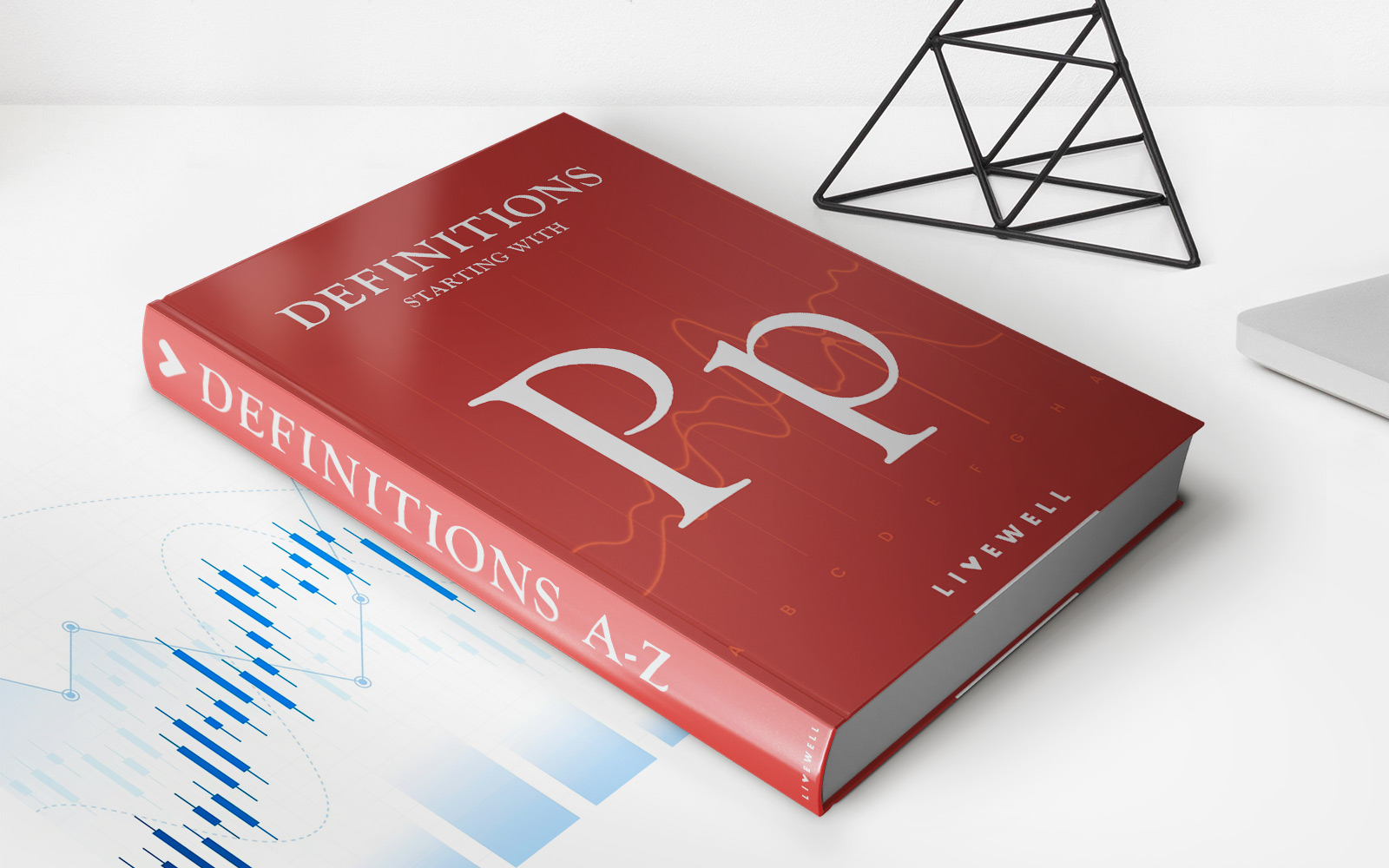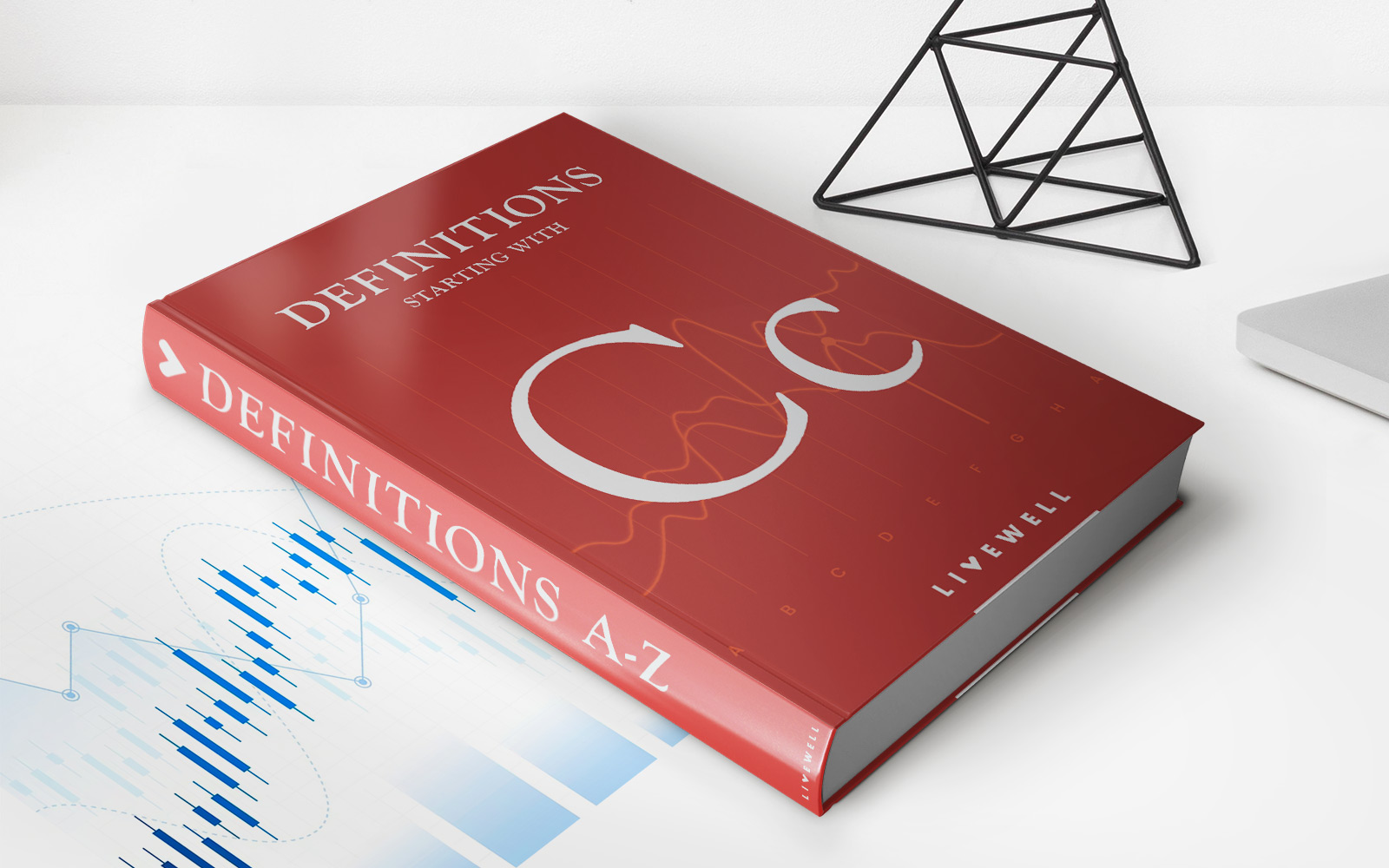Home>Finance>How Is A Savings Account Liquidity Greater Than A CD?


Finance
How Is A Savings Account Liquidity Greater Than A CD?
Modified: December 30, 2023
Learn how a savings account offers greater liquidity compared to a CD, and understand the role of finance in managing your financial goals.
(Many of the links in this article redirect to a specific reviewed product. Your purchase of these products through affiliate links helps to generate commission for LiveWell, at no extra cost. Learn more)
Table of Contents
Introduction
When it comes to saving money, there are several options available to individuals. Two popular choices are savings accounts and certificates of deposit (CDs). Both offer a secure way to save money and earn interest, but there is a key difference between them – liquidity. In simple terms, liquidity refers to how quickly and easily you can access your funds.
A savings account is a basic financial tool that allows individuals to deposit and withdraw money as needed. It is typically offered by banks and credit unions and provides a safe place to keep funds while earning interest. On the other hand, a certificate of deposit (CD) is a time deposit account that requires individuals to lock in their funds for a specific period, ranging from a few months to several years.
In this article, we will explore why a savings account has greater liquidity compared to a CD. We will delve into the definition of each account, examine their liquidity features, and discuss the reasons why savings accounts offer more flexibility when it comes to accessing funds. By understanding these differences, you can make an informed decision about which option is best suited for your financial goals and needs.
Definition of Savings Account
A savings account is a type of deposit account offered by banks and credit unions. It is designed for individuals to save money while earning interest on their deposits. When you open a savings account, you deposit a certain amount of money into the account, either in a lump sum or through regular deposits.
Savings accounts are usually accompanied by a passbook or provided with online access, which allows you to keep track of your transactions and account balance. The primary purpose of a savings account is to provide a safe place to store your money while still being able to access it whenever needed.
When it comes to liquidity, savings accounts offer a high level of flexibility. You have the freedom to deposit or withdraw funds as frequently as you like, without any penalties or limitations. This makes savings accounts an ideal option for short-term financial goals, emergency funds, or day-to-day expenses.
In addition to the ease of accessibility, savings accounts also come with the benefit of earning interest on your balance. The interest rates offered on savings accounts may vary depending on the financial institution and prevailing market conditions. While the interest earned on a savings account may not be as high as other investment options, it still provides a safe and reliable way to grow your savings over time.
Definition of CD (Certificate of Deposit)
A Certificate of Deposit (CD) is a time deposit account offered by banks and financial institutions. Unlike a savings account, a CD requires individuals to deposit a specific amount of money for a predetermined period of time, known as the term or maturity period. Typically, CDs have terms that range from a few months to several years.
CDs are considered low-risk investments as they are insured by the Federal Deposit Insurance Corporation (FDIC) in the United States. This means that even if the bank fails, your principal investment (up to the insured limit) will be protected. The interest rates offered on CDs are usually fixed for the duration of the term, providing a predictable return on investment.
One key aspect of a CD is that it restricts access to the funds during the term. Once the money is deposited, you cannot withdraw it until the CD matures without facing penalties. Early withdrawal penalties can vary depending on the financial institution and the length of the term, but they typically involve forfeiting a portion of the interest earned or even some of the principal amount.
CDs are popular among individuals who have a specific savings goal or who want to earn a higher interest rate compared to a regular savings account. They are often used for long-term financial planning, such as saving for a down payment on a home or funding a child’s education.
While CDs offer a secure way to save and grow your money, they lack the same level of liquidity as a savings account. This means that you need to carefully consider your financial needs and timeframe before committing to a CD, as early withdrawal can result in penalties and loss of potential interest.
Liquidity of Savings Account
The liquidity of a savings account refers to the ease and speed with which you can access your funds. Savings accounts are known for their high level of liquidity, making them a popular choice for individuals who need quick and convenient access to their money.
With a savings account, you have the freedom to deposit or withdraw funds as frequently as you like, without any restrictions or penalties. This means that you can access your money whenever you need it, whether it’s for unexpected expenses, making purchases, or funding short-term financial goals.
Most savings accounts offer several methods for accessing funds, including in-person withdrawals at bank branches, ATM withdrawals, online transfers, or even writing checks. This flexibility allows you to choose the method that is most convenient for your needs.
Another aspect of the liquidity of a savings account is the absence of a fixed term or maturity period. Unlike other financial instruments such as CDs, which require you to lock in your funds for a specific duration, savings accounts have no such restrictions. This means that you can keep your money in a savings account for as long as you like without facing any penalties.
The liquidity of savings accounts makes them a suitable option for various purposes. For example, an emergency fund should be readily accessible in case of unexpected financial needs. By keeping your emergency fund in a savings account, you can quickly withdraw the required amount without any delay or additional charges.
Additionally, savings accounts are advantageous for individuals who are saving for short-term goals, such as a vacation, a down payment on a home, or a new car. By utilizing a savings account, you can easily deposit money and withdraw it when it’s time to make the purchase or cover the expenses.
However, while savings accounts offer high liquidity, it’s essential to note that they may have lower interest rates compared to other financial instruments. Therefore, if you have longer-term financial goals or are seeking higher returns, you may need to explore alternative investment options that offer a better balance between liquidity and growth potential.
Liquidity of CD
Unlike a savings account, a Certificate of Deposit (CD) offers less liquidity due to the nature of its time deposit structure. When you invest in a CD, you commit to a specific term during which your funds are locked in, restricting your access to the money until the CD matures.
During the term of a CD, you cannot withdraw the funds without facing penalties. These penalties can vary depending on the financial institution and the length of the CD term but generally involve the forfeiture of a portion of the interest earned or even a portion of the principal amount.
The lack of liquidity is a trade-off in exchange for potentially higher interest rates that CDs offer compared to regular savings accounts. CDs are designed for individuals with a predetermined savings goal and a longer investment horizon. They provide a way to earn more interest over a specified period while offering a level of security and stability.
CD terms can range from a few months to several years, with longer terms typically offering higher interest rates. If you decide to withdraw funds before the CD matures, you will sacrifice the potential interest that would have been earned throughout the term.
It’s important to carefully consider your financial needs and goals before investing in a CD. If you anticipate requiring access to your funds in the near future, a CD may not be the most suitable option. However, if you are saving for a specific milestone or have a longer-term financial plan, a CD can be an effective way to grow your savings.
Additionally, some financial institutions offer options such as “callable” CDs or “bump-up” CDs. Callable CDs allow the bank to terminate the CD before the maturity date, while bump-up CDs enable you to increase the interest rate on the CD once during the term. These options provide some flexibility, but they may come with certain restrictions and conditions.
It’s essential to carefully review the terms and conditions of a CD before committing your funds to ensure that you are comfortable with the lack of liquidity and the potential penalties associated with early withdrawal.
Reasons for Greater Liquidity in Savings Account
There are several reasons why savings accounts offer greater liquidity compared to certificates of deposit (CDs). These factors contribute to the flexibility and accessibility that make savings accounts a preferred choice for individuals who need quick and convenient access to their funds:
- No lock-in period: Unlike CDs, savings accounts do not have a fixed term or maturity period. You are free to deposit and withdraw funds at any time without incurring penalties or restrictions. This allows you to maintain full control over your money and access it whenever you need it.
- No withdrawal penalties: With a savings account, you can make withdrawals without facing any penalties. Whether you need to cover an unexpected expense or make a planned purchase, you can easily access the required funds without worrying about incurring additional charges.
- Multiple access channels: Savings accounts typically offer various channels for accessing funds, including in-person withdrawals at bank branches, ATM withdrawals, online transfers, and even check-writing capabilities. This provides you with the convenience of choosing the method that suits your preferences and circumstances.
- Flexibility for recurring deposits: Savings accounts are designed to accommodate regular and frequent deposits. Whether it’s setting up automatic transfers from your paycheck or transferring funds from another account, you have the flexibility to contribute to your savings on an ongoing basis without any limitations.
- Easy-to-use online banking: Many banks offer user-friendly online banking platforms that allow you to manage your savings account conveniently. You can check your balance, review transactions, set up automatic transfers, and make withdrawals from the comfort of your own home or on-the-go using your computer or mobile device.
These characteristics of savings accounts make them an excellent choice for individuals who prioritize liquidity and require easy access to their funds. Whether you need to cover unexpected expenses, save for short-term goals, or simply want the peace of mind of readily available funds, a savings account provides the flexibility and convenience you need.
Factors Affecting Liquidity of CDs
The liquidity of a Certificate of Deposit (CD) is influenced by several key factors that determine the accessibility and flexibility of your funds. Understanding these factors is essential when considering a CD as an investment option:
- CD Term: The term of a CD is the length of time you agree to keep your funds deposited. Generally, longer-term CDs offer higher interest rates, but they also come with a longer lock-in period. The longer the term, the less liquid the CD becomes, as you cannot withdraw your funds without facing penalties until the CD matures.
- Early Withdrawal Penalties: CDs come with penalties for withdrawing funds before the maturity date. These penalties can vary depending on the financial institution and the length of the CD term. Typically, the penalty amount is a percentage of the interest earned or even a part of the principal amount. As such, the potential penalties can significantly impact the liquidity of a CD, making early withdrawals less desirable.
- Callable CDs: Some financial institutions offer callable CDs, which allow them to call back or terminate the CD before the maturity date. Callable CDs introduce an additional layer of uncertainty and can limit liquidity if the bank decides to exercise this option. It’s important to review the terms of a callable CD and understand the potential impact on your access to funds.
- Bump-up CDs: Bump-up CDs provide the option to increase the interest rate on your CD once during the term. While this can be beneficial, it may also involve certain restrictions and conditions. The ability to bump up the rate can enhance the overall value of the CD but may reduce its liquidity if you choose to exercise this option.
- Market Interest Rates: The prevailing interest rates in the market can also impact the liquidity of CDs. If market rates rise after you have invested in a CD, you may be tempted to withdraw your funds and deposit them in a new CD offering a higher rate. However, doing so may result in penalties, reducing the actual liquidity of the CD.
These factors collectively influence the liquidity of CDs and highlight the importance of carefully considering your financial goals, investment horizon, and potential liquidity needs before committing to a CD. By understanding the implications of these factors, you can make an informed decision that aligns with your requirements and overall investment strategy.
Comparison of Liquidity between Savings Account and CD
When it comes to liquidity, savings accounts and Certificates of Deposit (CDs) offer different levels of accessibility and flexibility. Let’s compare the liquidity of these two financial instruments:
Savings Account:
A savings account provides a high level of liquidity. Here are the key points to consider:
- Accessibility: You can deposit and withdraw funds from a savings account as frequently as you like, without any penalties or restrictions. This makes it a suitable choice for emergency funds or short-term financial goals.
- No lock-in period: Savings accounts do not have a fixed term or maturity period, allowing you to keep your funds in the account for as long as you choose without facing any penalties.
- Multiple access channels: Savings accounts typically offer various methods of accessing funds, including in-person withdrawals, ATM withdrawals, online transfers, and check-writing capabilities.
CD:
Certificates of Deposit, on the other hand, have lower liquidity due to their time deposit nature. Here’s what you need to know:
- Fixed term: CDs have a specific term during which you agree to keep your funds deposited. This term can range from a few months to several years.
- Penalties for early withdrawal: If you withdraw your funds from a CD before the maturity date, you will likely face penalties. These penalties can include the loss of earned interest or even a portion of the principal amount.
- Limited access: Unlike savings accounts, CDs do not offer the same level of accessibility. Once your funds are in a CD, access to them is restricted until the CD matures.
It’s important to consider your financial goals and liquidity needs when choosing between a savings account and a CD. If you require quick and convenient access to your funds or anticipate needing to make frequent withdrawals, a savings account is the more suitable option.
On the other hand, if you have a specific savings goal, can commit to a fixed term, and do not foresee needing to access your funds until the CD matures, a CD can be a beneficial choice, as it typically offers higher interest rates compared to savings accounts.
Ultimately, the decision between a savings account and a CD depends on your individual financial circumstances, risk tolerance, and liquidity requirements.
Conclusion
When it comes to choosing between a savings account and a Certificate of Deposit (CD), it’s essential to consider the liquidity of each option to meet your financial needs and goals. While both accounts offer a secure way to save money and earn interest, there are significant differences in accessibility and flexibility.
A savings account provides greater liquidity, allowing you to deposit and withdraw funds as needed without penalties or restrictions. It offers the convenience of multiple access channels and is suitable for short-term financial goals or emergency funds.
In contrast, a CD has lower liquidity due to its fixed term and potential penalties for early withdrawal. It is an investment option for those with longer-term financial plans who are willing to forgo liquidity in exchange for potentially higher interest rates.
When deciding which option is best for you, take into account your financial goals, investment horizon, and potential liquidity needs. If you value easy access to your funds, a savings account is the more suitable choice. However, if you have a specific savings goal or can commit to a fixed term, a CD can provide a higher interest rate.
Remember to thoroughly review the terms and conditions of any account before making a decision, as features, such as callable CDs or bump-up options, can impact liquidity. By understanding the differences in liquidity between savings accounts and CDs, you can make an informed choice that aligns with your financial objectives.
Ultimately, the right choice depends on your individual preferences, risk tolerance, and financial circumstances. Consider consulting with a financial advisor to help guide you through the decision-making process and ensure that the chosen option aligns with your long-term financial goals.














